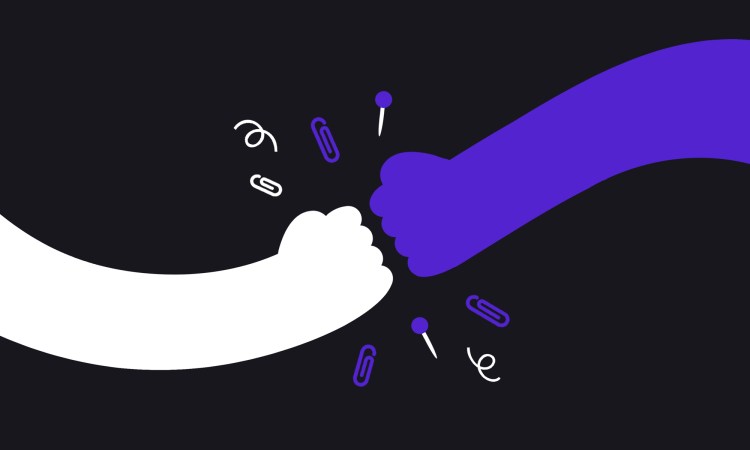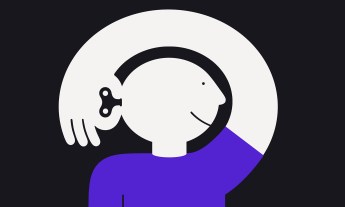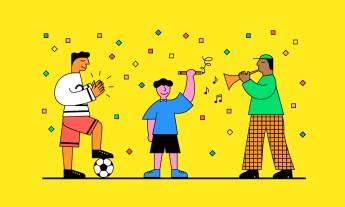
This post is part of TED’s “How to Be a Better Human” series, each of which contains a piece of helpful advice from people in the TED community; browse through all the posts here.
When you think about how to praise employees, it helps to realize there are two distinct kinds.
The first is the praise about a strength that moves the entire team forward, or what I call a “we-strength.” Perhaps Courtney has an easygoing confidence that means she can pitch almost any idea and people will love it. A we-strength is a strength that elevates the team or organization. Because Courtney is so persuasive, she never has to pitch the same idea at multiple meetings, plus your team brings in bigger, higher-paying clients.
The second kind of praise is about a strength that makes the employee stronger, or what I call a “me-strength.” What work energizes someone? What makes them feel excited to keep plugging away at a problem? A me-strength puts a person in what’s known as a flow state, where they’re fully immersed in the work, losing track of time because the work is so intrinsically satisfying.
Sometimes we-strengths and me-strengths are one and the same, but I’ve found that often someone’s we-strengths are quite different from their me-strengths. What lights up an individual can be very different from what lights up the team.
Let’s say Benjamin uses his sense of humor when he gives a presentation to disarm people and put them at ease. It’s an incredible we-strength, because he gets people talking, even laughing, about touchy subjects. He’s one of the rare people who can lead productive and safe conversations on topics that people usually sidestep, such as why so few employees of color are promoted into management.
But is it a me-strength? It turns out it isn’t. Benjamin doesn’t mind leading discussions on sensitive issues like race and ethnicity, but that’s not what he loves to do. What he truly loves to do and gives him energy is to think about visual design. If he can spend an hour improving the look and feel of a PowerPoint presentation, he’s happy all day. And because he’s tapped into a me-strength, then something he hates to do — maybe sitting in a meeting with a bombastic executive — becomes a lot more bearable.
As a manager, you want to recognize we-strengths and me-strengths differently — we-strengths need to be noticed and celebrated. When a strength benefits the group, you don’t want it to be a one-time shiny moment. You want it to be a repeated shiny moment, so point out both the specific behavior and its positive impact. Celebrate the larger impact, and each person will feel valued and special and willing to exercise that strength again. In Benjamin’s case, he spurred a conversation about the lack of diversity in management, and now the company is launching a mentoring program for people of color.
It’s especially important to point out the we-strengths of younger employees. When you’re young, you don’t know what you do unusually well. Someone needs to tell you. As one manager in tech told me, “When you’re young, you assume everyone is good at everything. If it comes easily to you, it must come easily to others.” You may grumble that millennials and Gen Z want too much feedback, but maybe they want it for a good reason. If they’ve grown up in an era where everyone got a blue ribbon just for showing up, they’re truly wondering, “What are my real gifts?”
Whereas we-strengths need to be recognized, me-strengths typically don’t. You can, of course, point out that Benjamin did an incredible job designing his latest PowerPoint slides — he would probably love to discuss the fonts he considered — but praise here isn’t as crucial.
Simply exercising a me-strength is, by definition, deeply rewarding. The best way to recognize a me-strength is to make sure a person gets a chance to use it, preferably every day. That might sound insane, but that’s exactly what the managers of the highest-performing teams succeed in doing. The ADP Research Institute finds the single best predictor of a team’s productivity is whether each team member agrees with the statement “I have the chance to use my strengths every day at work.”
Regardless of nationality or industry, the highest-performing teams say “yes” to that statement. Their managers have found a way to make that a reality. I hesitate to share this finding because it seems so Herculean: How could I possibly ensure that each person gets to use their strengths each day? There are tasks no one likes to do, like filling out tedious forms or reviewing someone else’s work for mistakes.
But the goal isn’t to expunge the dreaded tasks. The goal is to ensure that everyone spends part of their day, even just an hour or two, using their me-strengths and relishing what they do best. Then the dreaded tasks aren’t quite so dreadful.
If there’s one thing as a manager that you should do this year, it’s addressing the gap between people’s me-strengths and their opportunities to use them.
It requires two steps:
1) You need to gain clarity on what each employee’s me-strengths are;
2) You need to adjust their responsibilities so they have the chance to exercise them regularly.
This doesn’t mean weaving hobbies into work. It doesn’t mean Hannah gets to play Pokémon GO on her phone every day. But it does mean that if Hannah finds joy in crafting tantalizing, 280-character updates about your products on social media, let her loose.
You might be wondering how on Earth you’re going to tweak each person’s job to accommodate their me-strengths. It sounds onerous at first, but once you know what energizes someone, the two of you can often co-create novel, feasible solutions.
I once had a highly extroverted research assistant who lit up when he got to discuss the nitty-gritty of what he’d just learned. He wanted to connect with me daily, not once a week as I’d planned. A key part of his job was to create research reports, and when he didn’t get to bounce ideas off me, his reports were just so-so.
The solution: We found a second person in our group who also wanted more social interactions. The two of them met several days a week, sometimes just for 10 minutes, and hashed through what they’d each discovered. The clarity and insightfulness of his reports went up, he was happier at work, and so was she. Identifying how he did his best work turned a mediocre performer into a highly valuable one.
The key takeaway is this: Give everyone on your team a chance to exercise their me-strengths, and for years they’ll talk about how it was the best work they’ve ever done. And there’s a good chance it will be.
So how do you identify a person’s different strengths? For starters, ask. You can try “What do you love to do at work?” but that might elicit a shrug. (Note: You can also ask these questions of yourself to figure out your own me-strengths and we-strengths.)
Here are more nuanced questions to get people talking.
Identifying Me-Strengths
1. What do you know you enjoy doing but haven’t done yet?
2. What sorts of activities do you finish and think “I’m really looking forward to doing that again”?
3. What do you see on your calendar that you’re excited about?
4. Tell me about a time when you were doing an activity and you became so absorbed that you didn’t notice how much time had passed.
5. On your very best workday, the day you think you have the best job in the world — what did you do that day?
Identifying We-Strengths
1. What have other people told you that you do incredibly well?
2. What’s gotten you noticed throughout your career?
3. Where do you feel most useful?
4. What have you done in the past that you’re not doing now that you think had a lot of impact?
5. What seems to come more easily for you than for others on the team?
And another good general question to ask — and one that taps into both kinds of strengths — is “What are three things that you’ve done at work that you’re most proud of?”
Some people won’t have a good sense of their me-strengths. Maybe they’re fresh out of school, they haven’t had a chance yet to explore their strengths, or they simply have low self-awareness. (Only about 10 percent to 15 percent of people have high self-awareness.)
There are tools that can help. The CliftonStrengths assessment is one of my favorites, and at the time of publication, it cost less than $50US. You can complete it online, it takes about 30 minutes from start to finish, and you’ll receive a personalized report of your top 10 strengths ranked in order, along with an action plan so that you can leverage those strengths at work.
Excerpted from the new book Let’s Talk: Make Effective Feedback Your Superpower by Therese Huston PhD, with permission from Portfolio, an imprint of the Penguin Publishing Group, a division of Penguin Random House, LLC. Copyright © 2021 by Therese Huston.
Watch Therese Huston’s TEDxStLouisWomen Talk here:














